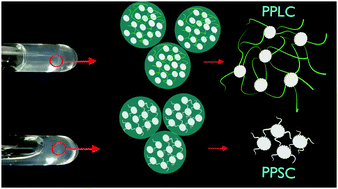Polyphosphates can stabilize but also aggregate colloids†
Abstract
Phosphates are well known as dispersants for a variety of colloidal particles. Here however we use rheological measurements to show that high molecular weight polyphosphates (PP) can instead act as a flocculant for LAPONITE® clay platelets. The proposed mechanism is bridging of PP between clay particle edges, leading to highly charged clusters forming a Wigner glass. Dynamic light scattering shows a bimodal cluster size distribution, independent of PP molecular weight, but the highest molecular weight gave the highest viscous and loss moduli for the PP–clay solid. These unique all-inorganic solids may have application in solid-state ionic conducting materials, controlled release fertilizers and biomedical applications.



 Please wait while we load your content...
Please wait while we load your content...